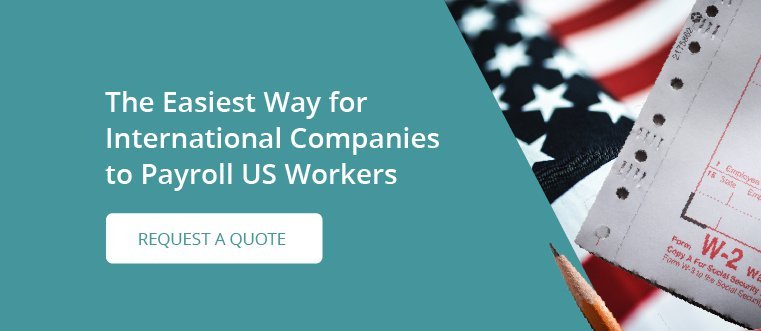If you’ve just expanded your business to the United States, you’ve taken a huge step toward growth. Now you want to ensure the success of your expansion. One of the best things you can do is secure the right people.
Another key is making sure you’re following the law, including tax regulations and employment legislation. Whenever you hire a new worker, you’ll want to be sure you’re familiar with the forms you’re legally required to submit.
You’ll need to submit some US tax forms when you first hire an employee. Some will need to be issued on an annual basis, while others will need to be updated from time to time. Here are five forms you should be familiar with if you plan to employ even one worker in the US.
1. Form W-4 Allows You to Withhold Taxes
The first form you’ll have any employee fill out is a W-4. This form authorizes you to collect and withhold income tax from the employee’s wages.
If an employee doesn’t fill it out, you can’t pay them. It’s in their best interests to complete this form and allow you to file it as soon as possible.
2. Form I-9 Verifies Employment Eligibility
Everyone you hire for your business operations in the US should be legally allowed to work. That’s why they must fill out Form I-9, Verification of Eligibility for Employment. If an employee refuses to fill out and file an I-9, they may not be eligible to work.
Hiring workers who aren’t eligible to work in the US can have repercussions on your business. You may be penalized by the IRS or even subject to visits from immigration officers. It can also disrupt tax withholding and payroll, as employees who are not eligible for employment may also not fill out Form W-4 discussed above.
3. Form W-2 Must Be Filed for Income Tax
As an employer, you’ll also need to fill out and remit Form W-2 each tax year. If you pay any employee more than $600 US in a year, you must complete this form and file it with the IRS.
A copy of your filing should also be sent to the employee for their records. Legally, you must send out W-2s before the end of January each year for the previous year. If you know this is going to be a challenge for your business, you may want to outsource payroll.
4. Form 1099 Is for Contractors
There may be times when you hire workers who don’t quite fit the bill as “employees.” You may hire them for a special project or for consulting work. These people are contractors, and you’ll need to fill out Form 1099.
Contractors engage with you on a business-to-business case, so you don’t need to withhold taxes from them. They don’t need to fill out Form W-4 to authorize you to withhold taxes since they look after their own taxes. Instead of a Form W-2, you’ll provide them with Form 1099 at the end of each tax year.
Make sure you’re classifying your employees and contractors correctly. Employee misclassification can result in penalties for your business.
5. Form SS-5 Must Be Filled out If an Employee Doesn’t Have a Social Security Number
If you hire a new employee, but they don’t yet have a social security number, then they need to apply for one. Form SS-5 is the form they’ll need to fill out.
You’ll need to be sure the employee obtains a Social Security number before you can proceed with the rest of the forms.
These are only some of the forms you’ll need to look after if you employ workers in the US. If you're having trouble keeping up with all the paperwork, you might want to think about outsourcing to a professional employer organization (PEO).




 Download Now
Download Now 

